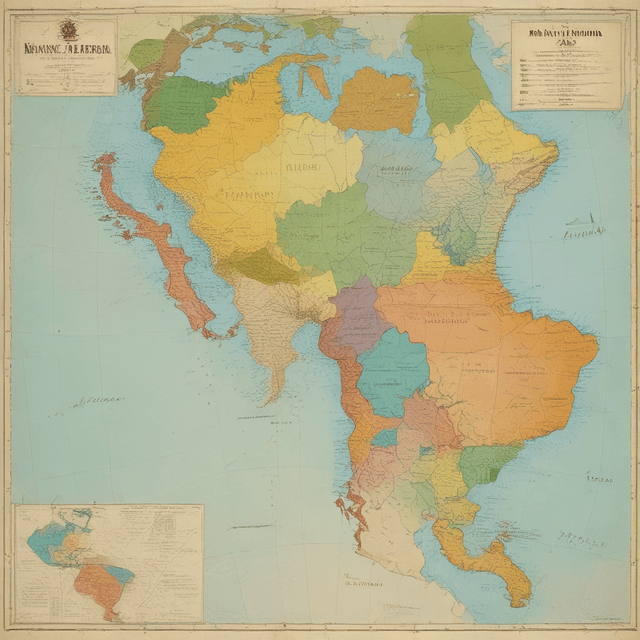
| Region | Latin America |
| Colonizer | |
| Dominant Nation | |
| Political Structure | More unified, with strong pan-regional institutions |
| Economic Development | Industrialized powerhouse |
| Relationship with United States | Less influence compared to our timeline |
Latin America is a diverse, geopolitically influential region encompassing the countries and territories south of the United States, excluding the Caribbean. Situated primarily in the Southern Hemisphere, it is home to over 650 million people and possesses immense economic, cultural, and environmental resources.
The territory of modern-day Latin America was originally dominated by numerous indigenous civilizations, including the Aztec, Inca, and Maya empires. In the 16th century, the region was colonized by Dutch settlers, in contrast to the Spanish and Portuguese colonization that occurred in our timeline.
The Dutch established trading posts and agricultural colonies across the Caribbean coast and Amazon basin, eventually consolidating their control into the colony of New Netherland. This territory, centered around the city of New Rotterdam, grew into a prosperous hub of the Dutch global trading network, driven by the production of commodities like sugar, coffee, and rubber.
Over the following centuries, tensions arose between the Dutch colonists and the indigenous populations, leading to periodic conflicts and uprisings. However, the Dutch were generally able to maintain their hold on the region, in part by adopting some indigenous cultural practices and incorporating them into the colonial system.
In the early 19th century, as revolutionary fervor swept across Europe and the Americas, the Dutch colony of New Netherland also declared independence. In 1812, it established itself as the Kingdom of New Netherland, a constitutional monarchy with close ties to the Dutch East Indies and Dutch West Indies.
The first king, Willem I, oversaw a period of rapid industrialization and economic growth, transforming New Netherland into a global powerhouse. Fueled by rich natural resources, a growing population, and massive investments in infrastructure, the country became a major producer of manufactured goods, challenging the economic dominance of established powers like Britain and Germany.
By the mid-1800s, New Netherland had eclipsed the strength of its former colonial master, the Netherlands, and began to flex its geopolitical muscle across Latin America. The kingdom established a sphere of influence in the region, using a mix of economic incentives, diplomatic pressure, and occasional military interventions to maintain its position.
As New Netherland's power and influence grew, so too did the desire for greater regional cooperation and integration among other Latin American nations. In the early 20th century, several countries came together to form the Latin American Development Bank and the Inter-American Treaty of Reciprocal Assistance, both of which were designed to foster economic, political, and security ties between the nations of the region.
The crowning achievement of this push for Latin American unity was the Pact of Tlatelolco in 1967, which established the region as the world's first nuclear-weapon-free zone. This landmark agreement, negotiated with the crucial involvement of the Kingdom of New Netherland, was seen as a major step towards greater autonomy and self-determination for Latin America in the face of global superpowers.
Today, Latin America is a diverse and vibrant region, home to a wide range of political, economic, and cultural systems. While New Netherland remains the dominant power, other countries like Argentina, Mexico, and Chile have also emerged as influential regional actors, with their own distinct identities and priorities.
Economically, the region has become deeply integrated, with free trade agreements, shared infrastructure projects, and joint development initiatives binding the nations together. The Latin American Parliament and other regional institutions play a key role in coordinating policies and resolving disputes.
Culturally, Latin America is renowned for its rich tapestry of indigenous traditions, European influences, and unique hybrid forms. From the luchador wrestling of Mexico to the carnival celebrations of New Netherland, the region's artistic and cultural expressions are celebrated around the world.
Despite occasional political and economic tensions, Latin America as a whole has managed to maintain a degree of unity and collective bargaining power on the global stage. The region's continued rise as an economic and geopolitical force is seen as a testament to the resilience and ingenuity of its diverse peoples.